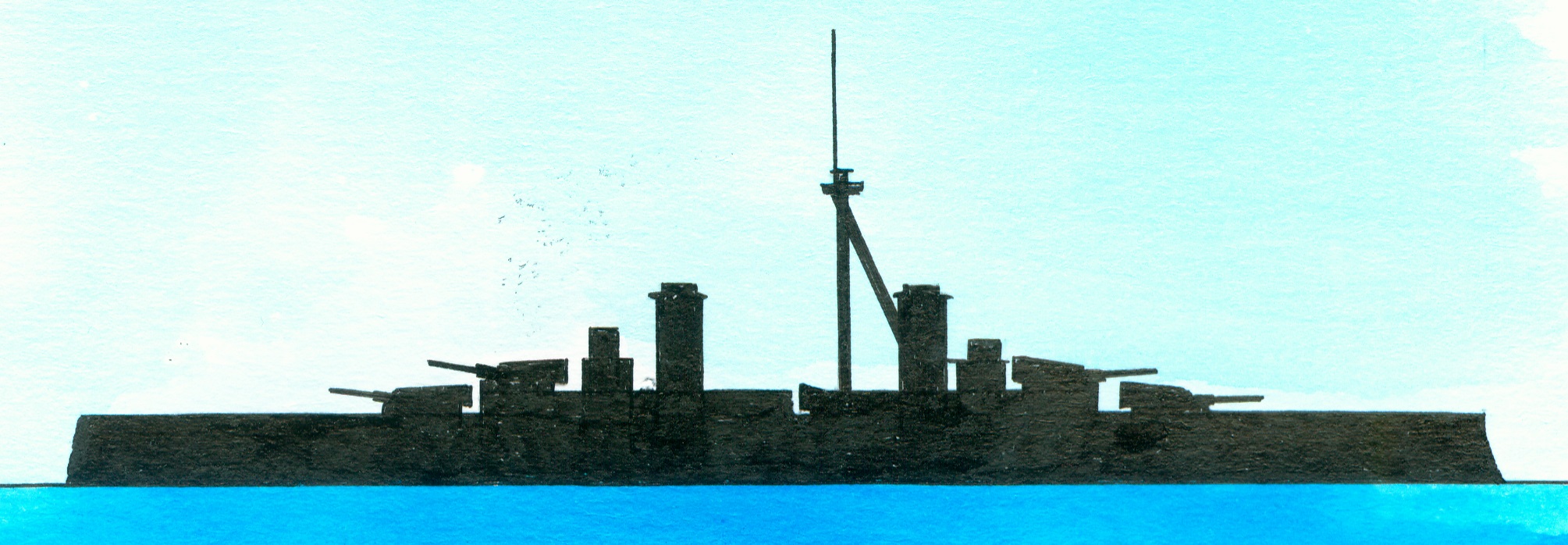Note
1. Of the Minas Geraes-class consisting of the Minas Geraes and the Sao Paulo was built due toe the naval arms race between Brazil, Argentina (1) and Chile (2) . In the designing stages was first chosen to use the designs of the Norwegian coastal defence ship Norge (3) and the British Swiftsure (5)-class (originally designed for Chile), but later was the choice the Armstrong Whitworth’s Design 439 or Vickers Design 188 consisting of 12.000 tons battleships with a main armament of 6x2-1225cm/10” guns. The Design 439 was altered resulting in a 14.564 tons ship. There were 3 to be built but just when the actual building started, was decided to stop and to break up starting on 7 January 1907. A new design was made by J.R. Perret (5) and which was approved on 20 February 1907 by Brazil. The third one ship of this class to be called Rio de Janeiro was cancelled and instead for which a super-dreadnought was to be built. Building ordered in 1906, laid down at Armstrong Whitworth, Newcastle-on-Tyne, England with yard number 791 on 17 April 1907, launched on 10 September 1908, completed on 5 January 1910, modernized 22 August 1920-4 October 1921 at New York, modernized at the Rio de Janeiro Naval Yard between June 1931-April 1938, modernized 1939-1943, during the Second World War serving as floating battery in the harbour of Salvador, decommissioned on 16 May 1952, stricken on 31 December 1952, sold to SA Cantiete Navale de Santa Maria, departed on 1 March 1954 to her final fate arriving on 22 April 1954 at Genoa, Italy where she was the same year broken up. Building costs 8.863.842 pond sterling.


